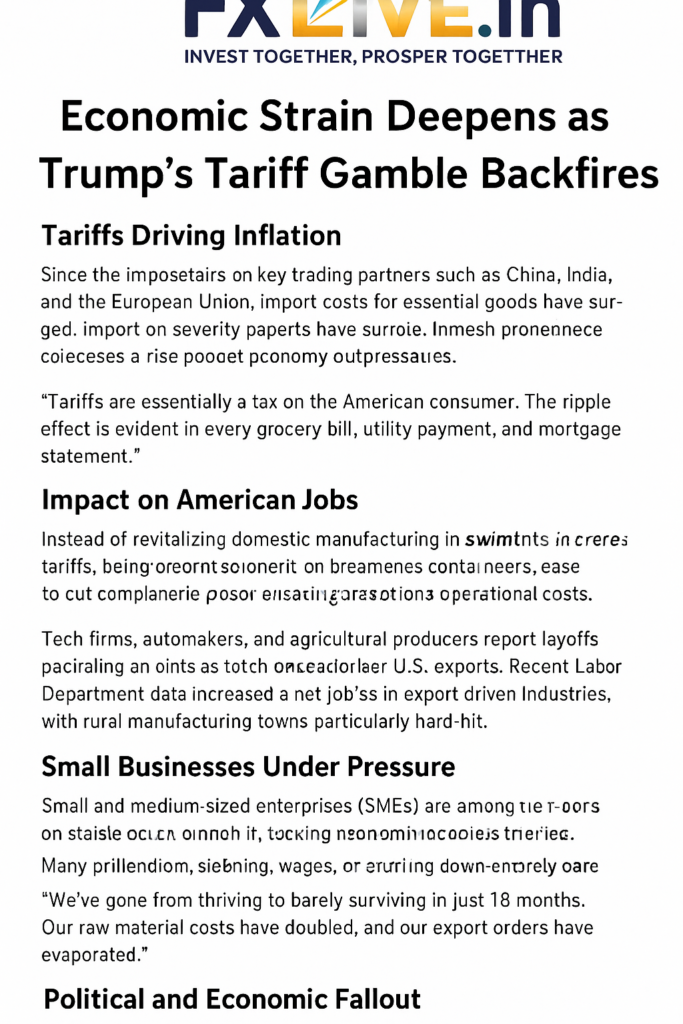Jai Siya Ram
Introduction
The U.S. economy is grappling with rising inflation and a wave of job cuts, trends that economists say are linked to President Donald Trump’s aggressive tariff policies. Initially billed as a strategy to protect American industry and create jobs, the measures are instead triggering supply chain disruptions, higher consumer prices, and reduced competitiveness for U.S. exporters.
Tariffs Driving Inflation
Since the imposition of steep tariffs on key trading partners—including China, India, and the European Union—import costs for essential goods have surged. Businesses, facing higher material and production expenses, have passed these costs on to consumers, pushing inflation to multi-year highs.
“Tariffs are essentially a tax on the American consumer,” said Dr. Laura Hernandez, senior economist at the Institute for Global Trade Studies. “The ripple effect is evident in every grocery bill, utility payment, and mortgage statement.”
Impact on American Jobs
While tariffs were intended to revitalize domestic manufacturing, the reality has been starkly different. Many companies reliant on global supply chains are cutting jobs to offset rising operational costs. Tech firms, automakers, and even agricultural producers report layoffs as foreign markets impose retaliatory tariffs, slashing U.S. exports.
Recent Labor Department data indicates a net job loss in export-driven industries, with rural manufacturing towns particularly hard-hit.
Small Businesses Under Pressure
Small and medium-sized enterprises (SMEs) are among the hardest hit, lacking the financial cushion to absorb tariff-related cost spikes. Many are delaying hiring, freezing wages, or shutting down entirely.
“We’ve gone from thriving to barely surviving in just 18 months,” said Amanda Price, owner of a midwestern metal fabrication shop. “Our raw material costs have doubled, and our export orders have evaporated.”
Political and Economic Fallout
Critics argue that Trump’s protectionist approach ignores the interconnected nature of the global economy. Instead of fostering long-term economic stability, the policy risks alienating allies, shrinking trade networks, and undermining investor confidence.
International credit agencies have warned of potential downgrades to U.S. economic outlooks if the trade war persists.
Conclusion
As inflation bites into household budgets and layoffs mount, the political cost of Trump’s trade strategy is becoming increasingly apparent. Unless a recalibration occurs—shifting focus toward balanced trade agreements and domestic economic stimulus—analysts fear that the U.S. may face a prolonged period of stagflation: slow growth, high unemployment, and stubbornly high prices.


